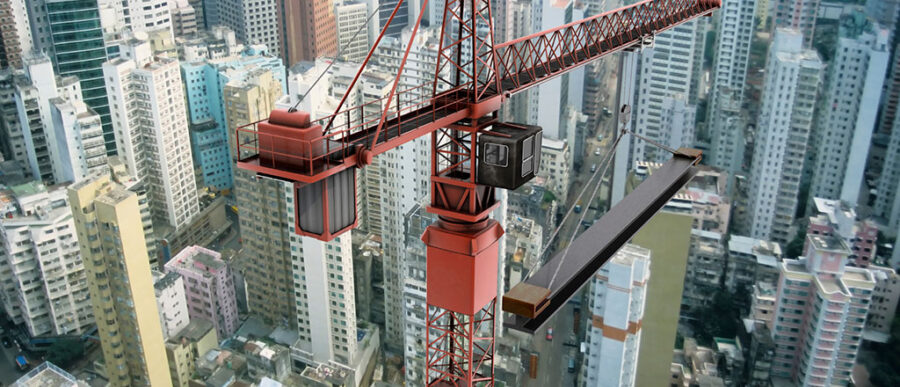Over the last 30 years, the rate of urbanization in China has left other nations in the dust. More than 500 million Chinese people have moved into the country’s mushrooming cities since the early 1980s, altering the landscape of the country. By 2030, the country is expected to have one billion people living in urban centers.
As part of this process, China’s leaders have been focusing on the nuts and bolts of expanding their cities. Fixed-asset investment skyrocketed in the last five years while China spent money on roads and railways. Construction and real estate development, not including the industries that supply them, accounted for 10% of China’s GDP in 2011. Now, however, China watchers are waiting for a new urbanization plan, one that focuses on social services, the environment and integrating the hundreds of millions of migrants into the fabric of the cities they live in. The shift is hoped to help boost domestic consumption in China, but experts believe it could also shift the investment landscape in the country.
“In the past, ‘urbanization’ meant rapidly raising the share of the urban population, and building a lot of urban infrastructure,” says Andy Rothman, China macro strategist at CLSA, a financial services group. “Today, I think ‘urbanization’ means providing more equitable access to social services for the people already living in cities, especially migrant workers.”
While quality of life will likely be a focus of the policy, the ultimate goal is economic. GDP growth in China is slowing, labor costs are going up, and the infrastructure investment that skyrocketed since the financial crisis is increasingly considered unsustainable. In a speech given last March, China’s new prime minster, Li Keqiang, identified urbanization as a “driving force” of China’s economy in the future.
“In the past, ‘urbanization’ meant rapidly raising the share of the urban population, and building a lot of urban infrastructure. Today, I think ‘urbanization’ means providing more equitable access to social services for the people already living in cities….”
If done well, urbanization can increase disposable income and boost consumption. “A farmer isn’t really adding much value to the economy,” says Tom Miller, managing editor at the China Economic Quarterly and author of the book China’s Urban Billion. ”But if they get a job in the city, you get a very easy boost to the economy.” A move from a primary industry, such as agriculture, into secondary or tertiary industries brings with it a natural increase in productivity. Some experts believe the knowledge sharing and technology transfer that is enabled by close proximity also increases urban productivity.
Of course, integrating new migrants into the urban economy, Miller notes, is not always so simple. Adding migrants onto the rosters of social services will take investment. Additionally, “you have to ensure that [new migrants] get jobs,” he says.
Changing China’s Residency system
Jobs are not the only things that are essential to boosting consumption and shifting the focus of urbanization from physical development to social inclusion, experts note. And the residency system that provides access to social services, the hukou system, has long been in conflict with the rapid migration happening in China.
Only 35% to 40% of China’s population actually has urban residency. Seventeen percent of the population is living in cities without a local permit. Without it, residents are unable to obtain city health insurance, send their children to school and access a range of social services. Many migrants have to return to their homes in the countryside to obtain health care or register their marriages. Their children have to remain at home to attend schools and take nationwide tests. Without a local permit, many migrants live on the fringes of China’s cities.
“A lot of people focus on the hukou system as a way of limiting migration,” says Kam Wing Chan, a professor of geography at the University of Washington, who specializes in studying the hukou system. “It was like that originally but, since about 25 years ago, that has changed. The hukou system has just served to allocate benefits, not to limit physical mobility.” This worked to help China become the world’s factory, flooding the cities with cheap labor that was transient and did not need the high salaries required to settle in a city permanently. A report released by China’s Bureau of Statistics in 2011 found that fewer than 1% of migrant workers had purchased homes in the cities where they lived and worked.
If China is hoping to promote domestic consumption, the country needs urban residents with more disposable income and enough of a social safety net that they feel comfortable spending a portion of that income. “There are a lot of people withholding consumption because of the uncertainty of living in the city without residency rights,” says Chan. “[Residency permits] could help incentivize some people to come to the city and create stability for those people that have already migrated. They can think about raising a family, they can go and buy housing.”
China has already shown signs that the new urbanization policy will come with a rethinking of the hukou policy. There are also a number of pilot programs in cities across China that have allowed, on a limited basis, a greater number of urban hukou permits to be distributed each year. In these cities, a points system based on education, employment and tax history allows a small number of people to apply for and obtain urban residency in their adopted cities.
These projects, however, have been small-scale and have been implemented in wealthy cities. As urbanization continues, however, arriving migrants will likely not meet the criteria of education, employment and skills. New arrivals will be older. Many will have spent their lives farming.
“In China, the problem we’ve found is farmers have been pushed and relocated to urban style buildings and lifestyle, but in essence they’re not real urban citizens,” says Keliang Zhu, an attorney with Landsea Rural Development Institute. These new residents will need support. Expanding the hukou system will mean expanding social services, building schools and hospitals, and working to make China’s cities more livable.
Running on Land Sales
The new push to improve the quality of urbanization in China touches on almost all aspects of the country’s economy. And reform isn’t likely to come cheap. One estimate, made by Reuters, puts the cost of reforming the hukou system and promoting a new form of urbanization at $40 trillion over the next 10 years.
Local governments have been at a funding disadvantage since China’s tax system was redesigned in the 1990s. Since then, the system has been organized so that the central government receives a large majority of the revenue. “The central government will either have to fund this itself, or give local governments a bigger chunk of the revenue,” says Miller of the urbanization push.
“It’s one of the most difficult problems in China,” adds Zhu. “The central government has good intentions, but they issue a lot of unfunded mandates. They issued a policy requiring equal access to education [for children] up to 12 years of age, but the central government provides very little funding for that. So, local governments try to find other resources.”
In the past that source has been land. The precise amount that local governments are making on land sales is large, but unclear. According to Miller, local governments make more than 25% of their revenue from selling land to developers. This system often results in land-grabs and policies that encourage needless construction, particularly in China’s small cities, where tens of thousands of newly-constructed apartments now stand empty.
“A farmer isn’t really adding much value to the economy. But if they get a job in the city, you get a very easy boost to the economy.”
Attempting to shift migration into these smaller cities could provide a solution, but Chan is skeptical of this plan. “[Recently], the Chinese government made clear what they want to … open up the smaller cities,” says Chan. “But already getting hukou in a small city is not really that difficult. So, why is that not working?” It’s not working, he notes, because migrants have minds of their own and still prefer the big cities where jobs are more easily found. “I think at this stage of the Chinese economic development, it is still Beijing, Shanghai and Guangzhou that are the big magnets,” he says. “Not only do they have many service jobs, these places have very large nearby industry as well; they are major hubs and they have the jobs that attract migrants.”
There are other complications to using land sales as a primary source of government revenue. Zhu points out that if China’s newly urbanized residents are expected to start consuming at higher rates, they will need money in their pockets when they arrive. If farmers are dispossessed of their land, rather than able to sell it, they are more likely to arrive in the city penniless. “The hukou system is closely tied with land rights,” he says. “So you have to reform both. You have to have a comprehensive approach.”
Shaping China’s New Urbanization
In 2009 a report from McKinsey Global Institute offered some details on what a comprehensive approach would look like. Cities will have to stretch their social services, increasing efficiency to do more with their resources, the report noted. Concentrated growth — increasing density in larger cities rather than expanding a city’s footprint — is a more efficient model than the urban sprawl that past development initiatives have supported. Large cities could also manage their resources more strategically, working to boost energy productivity and water usage with programs that help promote the adoption of energy-efficient lighting and water-price tariffs.
According to the McKinsey report, these sorts of dense, super-sized cities would also be well-served by implementing city development plans that are centered on public transport and develop according to strict zoning regulations. Administration takes up a large percentage of government spending and cities could work to streamline their bureaucracy and eliminate any repetition. Cities could also stretch their health care services by encouraging primary care, opening convenience clinics and boosting initiatives related to prevention.
“Public housing is something they will have to expand,” adds Chan. “Certainly a portion of the migrant population will qualify for public housing.” Other investments might include facilities for elderly people with urban hukous. Schools, he says, are already built and available as China’s urban population ages and its school-age population shrinks.
The new urbanization policy comes a year after preferential tax policies released last year to help encourage private investment and stem overspending by local governments. The policy will likely include space for private sector investment in fixed assets, as well as safety-net sectors that help expand access to social services. Fixed asset investment may slow, but the share of it will likely expand. In addition, infrastructure investment in China has leaned heavily on equity investments, with a smaller amount of capital coming from loans and bonds. Foreign investors may be increasingly welcome in this sector in the future, experts note.
Chan says the hukou system can be reformed gradually with little additional cost. “There are a lot of good advantages to this, like making the urban labor force younger, that would help ease the financial burden,” he says. “I’ve proposed a program that would need to be very gradual — it would take at least 15 years.”
In Chan’s plan, urbanization would favor the educated and skilled first and then move on to other social groups. Moving gradually would help China realize the benefits of urbanization without overtaxing city resources. “This will also give people the incentives to improve themselves,” he notes.



